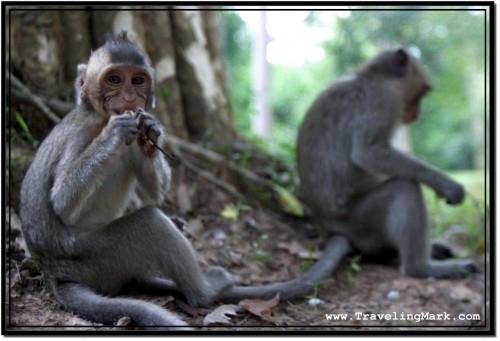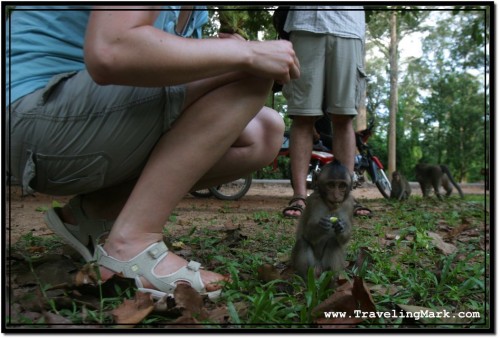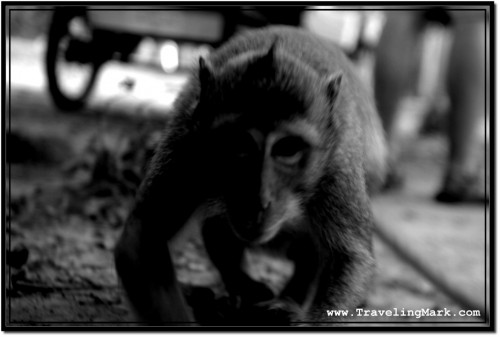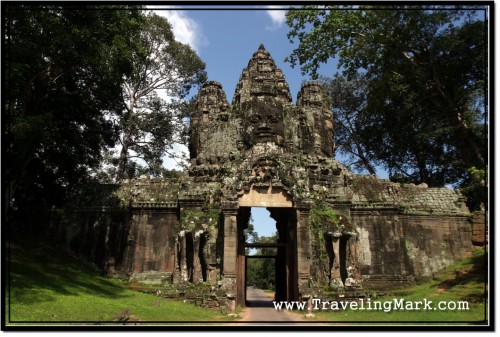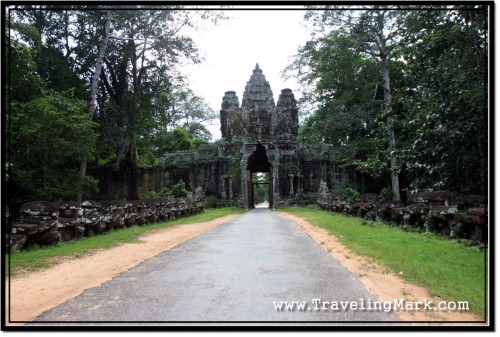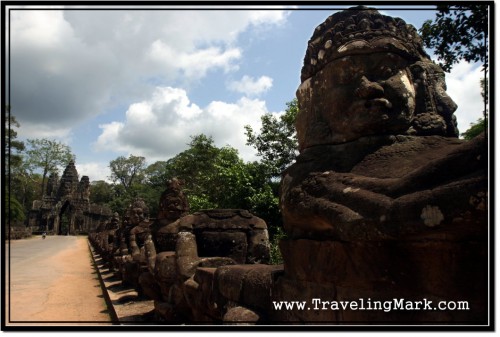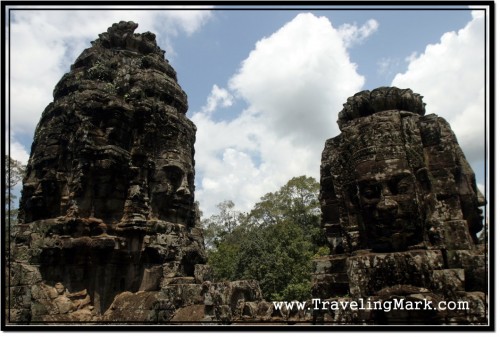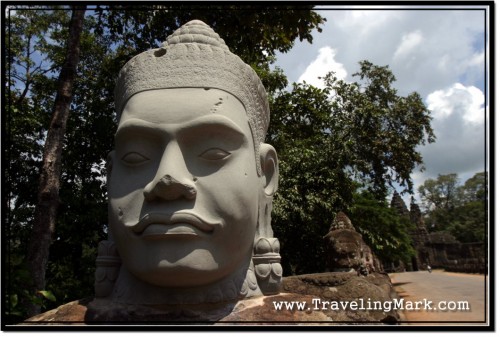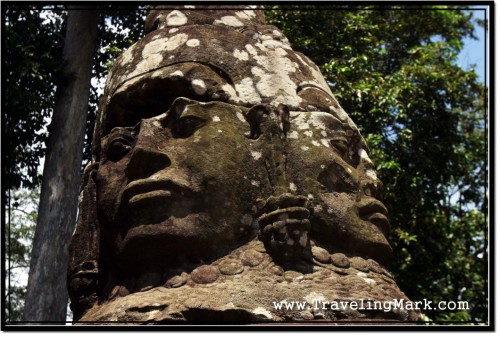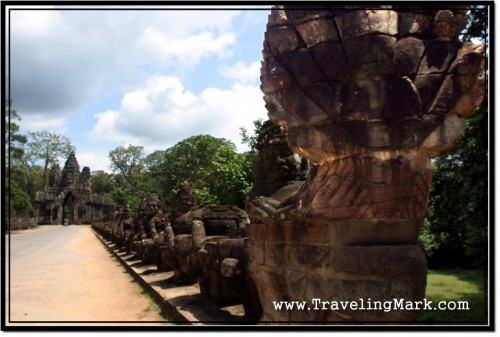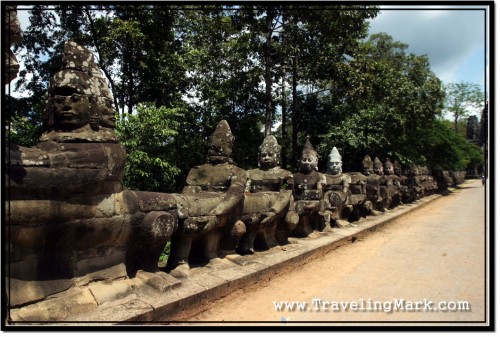Out of 5 gates that afford access to the royal Khmer city of Angkor Thom, only two are heavily trafficked. Being on the Petit Circuit through Angkor Archaeological Park, both South Gate (the busiest one, because it’s also part of the Grand Circuit) and Victory Gate have people passing through them often. Since Angkor Thom North Gate is on the Grand Circuit and off the itinerary vast majority of visitors to Angkor restrict themselves to, it is a much quieter gate than the other two.
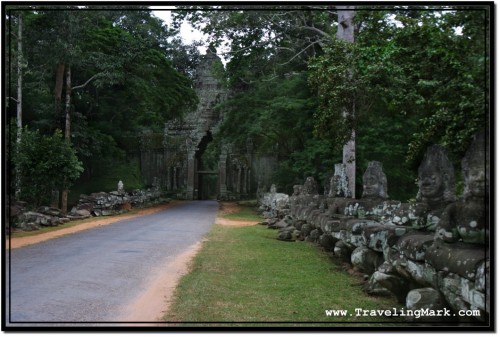
Angkor Thom’s square shaped exterior wall has one entrance gate on cardinal point, except from the east wall, which has two – East Gate and Victory Gate. East Gate, even though it’s in the middle of the wall and in line with Bayon, sees very little in terms of traffic because everybody who passes through Angkor Thom simply takes the paved road which was laid to pass through Victory Gate. Yet there still is a gate traffic through which is even scarcer. West Gate is almost totally abandoned and hardly gets any visitors through. Only the most determined explorers who also decide to visit West Mebon (huge water reservoir west of Angkor Thom) take this detour which requires whole day (unless you have motorized transportation) and has very little else to offer.
Needless to say, South and Victory Gates, being the busiest of five have seen more restoration work than the other three gates. North Gate did get restored a bit, but it was one of the gates that was pretty well preserved to begin with. When looting became a profitable past time activity for average Cambodians, many stone giants (Devas on the left and Asuras on the right) adorning the sides of the causeways spanning the dried up moats in front of each gate were vandalized and their severed heads sold to collectors from abroad. Many of the North Gate giants didn’t escape this fate either, leaving this part of the North Gate desperately devastated, but the gate itself remains in pretty good shape.
Nothing otherwise makes the North Gate of Angkor Thom special in any way. It is quieter than South Gate, so if you seek less disturbance from the Cambodian touts of doom, you can find it here. However since all Angkor Thom gates were built to be identical, your best bet for pictures is to stick with the South Gate due to well restored Naga bearing Apsaras and Asuras on either side of the causeway. South Gate also gets many elephants through it which also makes for rather interesting, albeit sad pictures. Like all other gates as well as the towers of Bayon, the North Gate is crowned with the faces of the bodhisattva Avalokiteshvara bearing the likeness of king Jayavarman VII who had them build.
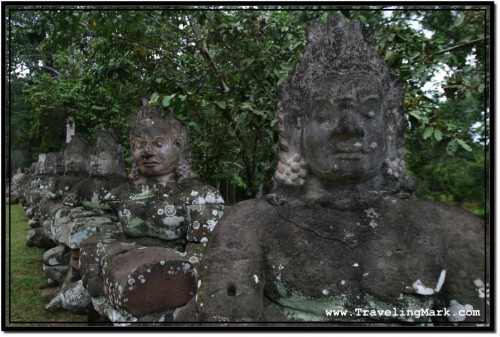
I didn’t spend much time at the North Gate, just passed through it, making only a minute long stop to snap a couple of pictures. By entering Angkor Thom through the North Gate, I returned to the area I had previously explored, so North Gate concluded my adventure on the grand circuit of Angkor. I did a lot that day. It was incredibly hot and I even managed to foil an attempt to have my bicycle stolen. I was ready to start riding back towards Siem Reap where my cozy bed at the Prom Roth Guest House and Ha were waiting for me. I only had one more stop to take – back at Angkor Wat to say “Hi” to the girls and have one more coconut for the energy to ride back after a long and tiring day.
